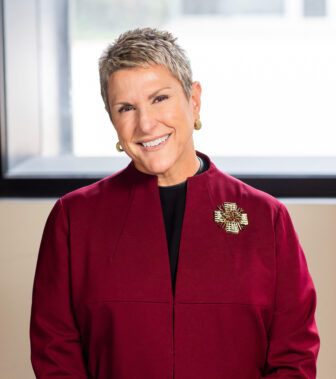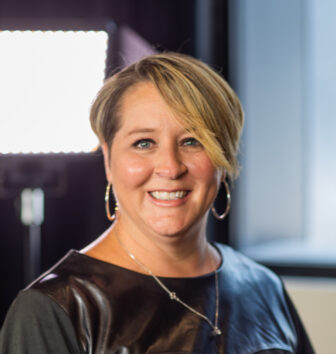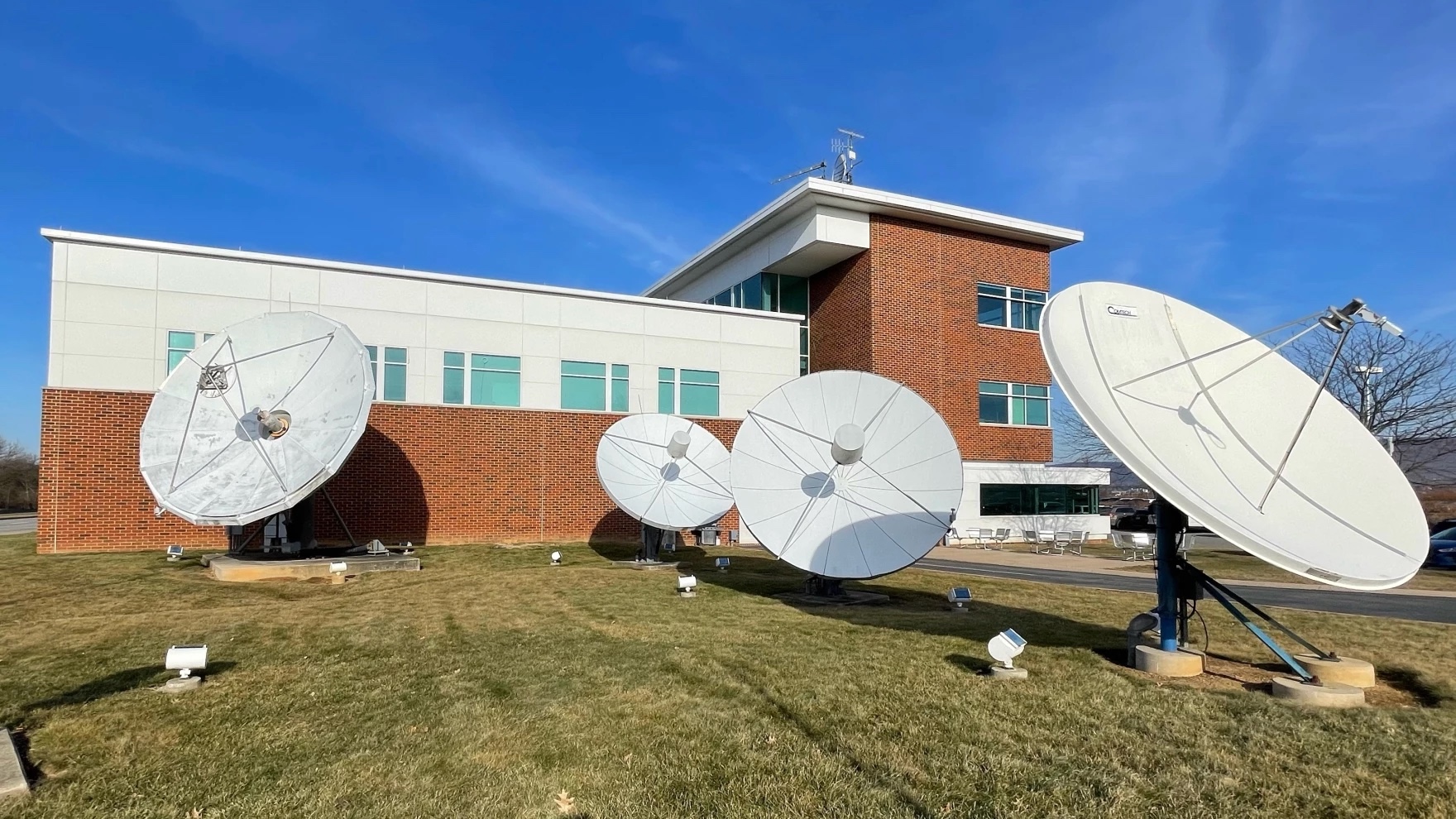Stations encounter burnout, frustration in ‘long game’ of advancing DEI goals

Anthony Foronda
Among the dozens of public media stations that made commitments to improve diversity, equity and inclusion at their workplaces in 2020, some managers and staffers say they are seeing momentum in their efforts, despite a slow and at times bumpy start.
Managers and staff who are leading DEI initiatives at their stations describe unanticipated delays in implementing action plans, misunderstandings over the roles of staff committees, and concerns about the intensity of the work yet to be done. Staffers who have taken on DEI work in addition to their full-time jobs have struggled with burnout.
“It’s hard, because this work does take a lot of time,” said Jenn Chávez, a radio host, announcer and producer for Oregon Public Broadcasting who co-chairs a staff-led DEI content committee. “But it’s easy to feel impatient when these issues are so urgent, not just for our colleagues but for our entire audience.”
During the racial reckoning that reverberated across workplaces following the murder of George Floyd in May 2020, some public media organizations released statements detailing their commitments to improve DEI. These commitments ranged from pay equity studies and eliminating unpaid internships to conducting DEI training and forming DEI working groups that would advise management.
Some stations joined Public Media for All, a coalition organized by people of color who work in public media. The coalition challenged stations and other organizations to make specific changes and take measurable actions around DEI issues such as pay equity and staff diversity.
According to the coalition, more than 75% of the organizations have gone on to complete three of the recommended changes, which include incorporating commitments to DEI work in their mission and values statements, goals, budgets and work schedules; affirming that rapidly diversifying programming, audiences, donors, staff and leadership is imperative to their survival and success; and compensating all interns.
Most of the 40 organizations that signed on have completed at least one of the group’s posted action items, the Public Media for All coalition said in an email.
“Almost all the organizations (station and other industry orgs) remain active with this work, and attend monthly cohort calls where we share case studies, discuss issues and solutions, and practice modeling this work,” the coalition said.
Public Media for All has also launched a peer group pilot project for smaller groups to meet monthly. “This new project was identified by PMFA and the participating organizations as the best way to provide themselves with more accountability and support,” the coalition said.
Managers of participating stations said that Public Media for All and other executive training programs influenced how they prioritize and manage DEI reforms. The experiences also deepened their understanding and commitment to ensuring DEI for their employees and audiences.
Many public media organizations responded to the movement for racial justice and equity by releasing statements, recalled Kate Midgett, VP and chief organizational excellence officer for Nine PBS of St. Louis. Joining Public Media for All helped her station develop specific plans. The coalition “helped us really say, ‘We’re in this for the long game. We’re not just wanting to throw some things together and somehow pat ourselves on the back.’”
“It helped us focus our strategy to say ‘This is what we believe, how we feel, what we want to be as an organization moving forward,’” Midgett said.
‘Friction point’ with working group
New Hampshire Public Radio, a participant in Public Media for All, has implemented a host of DEI changes over the last year.
The state network began regularly updating and publishing statistics about the diversity of its staff and the gender and race of people whose voices are heard on its news programs. NHPR implemented an anti-racism policy in April. Staff have been participating in DEI training sessions, including workshops that began in January with NPR Chief Diversity Officer Keith Woods and Whitney Maddox, NPR’s DEI manager.

Like many news organizations and other cultural institutions, NHPR has been “conscious of the need to address issues of diversity in our ranks and diversity in our journalism for a while,” said CEO Jim Schachter. “And also like many organizations, the murder of George Floyd and the reaction to that among our staff and our community and in the larger culture really focused our attention acutely on what we have done and what we haven’t done.”
Despite progress on multiple fronts, work has stalled on one of the DEI commitments that was included in NHPR’s June 2020 public statement on improving its news coverage and workplace culture.
In the statement, written by Schachter, NHPR pledged to establish a working group that would advise leadership “on the ongoing work of embracing the practices of diversity, equity and inclusion; to serve as a conduit for staff concerns, and to hold leadership accountable for maintaining focus and progress on these fronts.” The group convened and tried to carry out its mandate, but not for long. It disbanded last year.
Both Schachter and Sara Plourde, NHPR’s senior producer of graphic design and user experience and former co-chair of the working group, said poor communication was partly to blame for why the group dissolved.
“The process was not nearly as healthy and productive as I hoped for it,” Schachter said. He blamed himself, in part, saying that he had failed to define clear roles, responsibilities and accountabilities for the working group. He also cited “some really inadequate communication” by the group, himself and the human resources department as another reason for the group’s undoing.
A “friction point” developed over how much autonomy the group would have within NHPR, Plourde said. Members of the working group expected to have more autonomy than management intended.
The group saw its role as providing accountability on the station’s DEI goals, making sure that “if we’re setting benchmarks, we’re hitting them,” Plourde said. “And part of that, of course, is knowing what the station goals are.” But the DEI commitments in Schachter’s statement were broad and difficult to track, she said.
“It is hard to hold the station accountable … when you don’t know what the goals are,” Plourde said. She described “frustration with how much progress we were really able to make” because of “hesitancy around transparency about policies and practices from HR leadership.”
During its year in existence, the working group interviewed staff who had left NHPR about their experiences, then reported its findings to Schachter and the station’s board chair. In the interviews, the group members heard about problems with HR, experiences with racial and gender bias, microaggressions towards people of color and instances of bullying, Plourde said. For some working group members, the interviews led to “trauma and emotional burnout,” Plourde said.
Over time, working group members either left for new jobs or ended their involvement. As its numbers dwindled, the group was no longer viable.
Now NHPR intends to create a DEI strategic plan that will include specific, measurable goals. Work on the plan, which began last spring, is now on hold until NHPR hires a new director of people operations, Schachter said. That recruiting process is underway. Once on board, this staff person will be in charge of creating “a formal document with timelines and metrics to measure our progress.”
The new strategic plan will be “a multiyear, multi-front, purposeful plan so we’re not just improvising,” he said. “We’re … measuring our success against a plan.”
Despite the setbacks, Plourde believes NHPR has begun putting more effective DEI systems in place. She pointed to increased transparency around staff diversity statistics and a new bias-free hiring practice and rubric that the station implemented.
Work on DEI systems is “actually in progress,” Plourde said, “which three years ago I would not have said.”
‘Moving in the right direction’
Nine PBS in St. Louis began evaluating how to change its workplace culture by conducting an anonymous survey of staff. Completed in 2020, the survey found “a lot of strengths,” Midgett said. “But we also saw some opportunities to improve, and some of that was focused around feelings of belonging within the organization.”
The results shifted Midgett’s role in the organization — she was director of evaluation at the time — from an external to internal focus. “The understanding is we can’t be our best outward-facing within the community if we aren’t our best within the organization,” she said.

The need for some of the changes had been clear in early 2020, when CEO Amy Shaw was appointed permanent successor to her predecessor Jack Galmiche, who died unexpectedly in 2019. Prior to Shaw’s promotion from her previous SVP role, a woman had never led Nine PBS, and people of color had never been hired for executive roles at the station. Shaw has since made diversifying leadership a priority.
One of the actionable items from the staff survey was the need to revise the parental leave policy, Shaw said. The station changed the policy to provide six weeks of paid leave to staffers who give birth and four weeks if a partner or spouse has a child or if a staffer adopts or fosters a child. Previously, staffers had to use a combination of short-term disability, vacation and sick time for paid parental leave.
For the parental leave policy and other changes, management has relied on groups of staff for advice. The three groups, which were organized by staff, focus on benefits, culture and physical activity. When management was evaluating changes to the parental leave policy, the benefits group provided feedback, Midgett said.
While staff feedback and the survey helped Nine PBS’ leaders identify where to make changes, Public Media for All’s list of action items for organizations provided a framework for change.
“The accountability metrics were really important,” Shaw said. The action items helped Nine PBS go beyond talking about its commitments to diversity, equity, inclusion and belonging (DEIB), she said. Metrics developed by Public Media for All provided a roadmap for “how to get there by these standards.”

To inform their approach, station leaders adopted Nine PBS’ model for external community engagement work, which involves listening to community members and developing priorities and plans based on what they say, Midgett said. “By listening to our staff, that’s how we develop our priorities around how to build a more positive, inclusive culture,” she said.
One challenge for management has been building a shared understanding of DEI issues among all staff. “Any time you do this work, there’s some people that want you to go faster,” Midgett said. “You also have to meet everyone where they’re at, and some people have never … engaged in this type of work.” With that comes the realization that DEI is a “long game” and Nine PBS will be “in it for the long haul,” she said.
Alex Stallings, director of early learning at Nine PBS, has seen “a lot of activity” around DEI at the station that is “definitely moving in the right direction,” she said.
Most notably, she said, the station has raised the profile of the work, “making it highly visible and institutionalized.” For instance, Nine PBS created employee resource groups that focus on issues of shared concern. Stallings co-chairs the BIPOC group, which meets regularly during work hours so it’s easier for staff to attend. “We’ve been able to have conversations in those spaces that maybe wouldn’t have happened otherwise,” she said.
Stallings wants management to continue to keep “the listening options open” by conducting surveys and creating open discussion spaces for other topics to arise, she said. “It’s not a one and done kind of thing. The work isn’t a checkbox, but it’s rather an approach.”
Having DEIB work embedded into Midgett’s role at Nine PBS is also important, Stallings said.
“With the turbulence of our time, it would be understandable for us to need to divert staff resources or to change our focus to make sure we’re covering what’s next,” she said. “But with it embedded in a job function … it will stay consistent regardless of what is next for public media to address.”
‘This is hard work’
At Portland-based Oregon Public Broadcasting, DEI reforms have focused on issues such as pay equity and retention of people of color.
One of the biggest challenges has been building a sense of momentum and internal consultative processes that will be sustainable, according to Chávez, the OPB staffer who co-chairs the DEI content committee.
Months before the pandemic, in November 2019, the network conducted an internal cultural assessment survey. That provided a baseline for which issues to address and prioritize, said OPB President Steve Bass. It led OPB to focus more on retention “and really paying attention to our staff of color,” he said.
OPB was working with the Center for Equity & Inclusion, a Portland-based consulting company, to provide staff DEI training in early 2020. When the pandemic hit, staff began working remotely. “Some of the training and the other work that we were teed up and ready to go on, it just took longer to do it,” Bass said.
In the summer of 2020, staff at OPB wrote a letter to management calling for concrete changes to improve equity. “We wanted to see commitments on pay equity and commitments on doing more work around retention,” Chávez said.
Management met with staff who signed the letter “to make sure we fully understood the issues and concerns and to open up a dialogue,” Bass said. Leadership moved quickly on some changes, such as eliminating unpaid internships and “clarifying and updating our policy for temporary employees,” he said.
When employees presented the letter, management was in the process of sharing results from a cultural assessment survey that staff had completed earlier that year, Bass said. “The results of the cultural assessment reinforced and clarified the broader work that needed to happen in onboarding and retention,” he said.
To address that need, OPB had begun recruiting an HR professional to focus more fully on that work. “The letter reinforced that effort,” Bass said.
OPB also commissioned a pay equity study. The HR leader will, in part, help the organization finalize a plan that specifies OPB’s equity priorities, Bass said.
Management has been receptive to staff concerns, Chávez said, and has made a point of thanking employees who have helped identify issues. Leaders have also “shown ways in which they’re interested in helping,” she added. “But a lot of things move slowly, and it can be frustrating.”
She pointed to the pay equity study, which is being completed by an outside consultant. “It’s taking a long time,” she said.
Work on the study that began in the fall of 2020 is nearing completion, Bass said. He expects to see the consultants’ report in the coming weeks.
“We began the process without a full understanding of the effort that would be required by OPB, as well as how COVID would impact the project timeline (both for OPB and our consultant),” Bass said in an email.
“It required a fairly rigorous review of each job, as well as significant employee and manager input to make sure that the essence of each job was captured,” Bass said. “While we have standards and structure for our compensation system, the work with the consultant identified several areas where changes were required before we could complete the study.”

The DEI content committee that Chávez co-chairs has also struggled with the intensity of the work to be done, she said. This summer its members took a break due to burnout.
“We feel really strongly about this work, and it all feels really urgent, but we’re all volunteers,” Chávez said. “We don’t have DEI training per se, and we all have full-time jobs.”
The committee, which is made up of BIPOC and white members from across content divisions, was started by staff of color during the fall of 2020 “to make sure that we’re really serving everyone in our audience,” Chávez said. The group holds town halls to discuss DEI topics relevant to the content teams and provides a content review process for staff who want a “second set of eyes … when it comes to issues around race and equity in their story,” she said.
The committee has “institutional buy-in” from management, she said, but most of its members aren’t in leadership positions. “We can only do so much,” she said.
Now that the committee’s work has resumed, Chávez hopes to avoid another bout of burnout by making sure that supervisors recognize that committee members’ involvement with DEI content is part of what they do on a daily basis. Her supervisor has supported her participation in this way, and other supervisors are starting to come around, she said. She also hopes that management will budget funds that can, in part, compensate members of the committee.
“This is hard work, and especially for staff of color,” Chávez said. “DEI efforts can sometimes, and I’m not talking about OPB here, but just in general … fall on people of color.”
“One of the big challenges that I would say organizationally, not just for us, but also probably for leadership and anyone who’s engaged in this work, is that it needs to be sustainable,” Chávez said. “Because this is really a long-term investment. DEI work can’t just be like, ‘OK, we have a committee: check. OK, we hired a person of color.’ There’s so much more that needs to be done. And public media and OPB has made a lot of progress, but the work’s not over.”
Both Bass and Chávez described retention of people of color on staff as a priority. Chávez pointed to the need for mentorship, pay equity and “clear pathways to growth” for people within the organization as important for retention.
OPB leaders think “a lot more about equity in all of the decisions we make now” compared to two years ago, Bass said. “We ask ourselves questions like, “OK, so who are we centering in the decision we’re making?”
It’s also important to support staff ideas, Bass said, such as the DEI content committee’s work on editorial coverage and story sourcing. The committee “turned out to be a really great thing,” he said.
“It’s not always going to be top-down, and I would say that if we think of it as being top-down, we’re kind of missing the boat,” Bass said. “How do we invite participation from employees who have a passion for bringing this about and align that with things the organization’s doing?”





